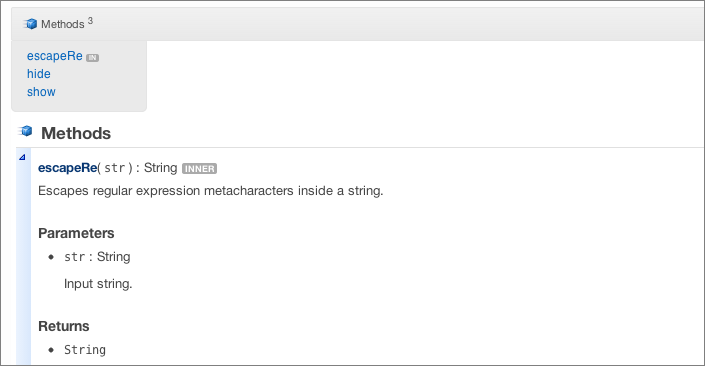-
Notifications
You must be signed in to change notification settings - Fork 238
Boolean tags
We'll start our tutorial with the simplest of all - a boolean tag.
Let's define an @inner tag, which we could use to label methods
which can't be accessed outside of class. For example:
/**
* Escapes regular expression metacharacters inside a string.
* @param {String} str Input string.
* @return {String} Escaped string.
* @inner
*/
function escapeRe(str) {
...
}We call such tags boolean tags because they just either exist inside a doc-comment or not. And here's how to implement this one:
require "jsduck/tag/boolean_tag"
class Inner < JsDuck::Tag::BooleanTag
def initialize
@pattern = "inner"
@signature = {:long => "inner", :short => "in"}
super
end
endBecause boolean tag is such a common pattern, there is a special
BooleanTag class that we can extend. Inside the class we define an
initialize method (a constructor in Ruby world), define some member
variables and call the superclass method to do some additional setup.
-
@patterndefines a name of a tag to detect inside doc-comments. -
@signaturedefines the labels to display in final documentation. The following screenshot should clarify the effects of it:

As you can see the :long field defines the longer label to display
after member name, and :short is for the label in dropdown menu.
Just this small label "inner" might not be enough - so continue with the next chapter to add some additional HTML output.